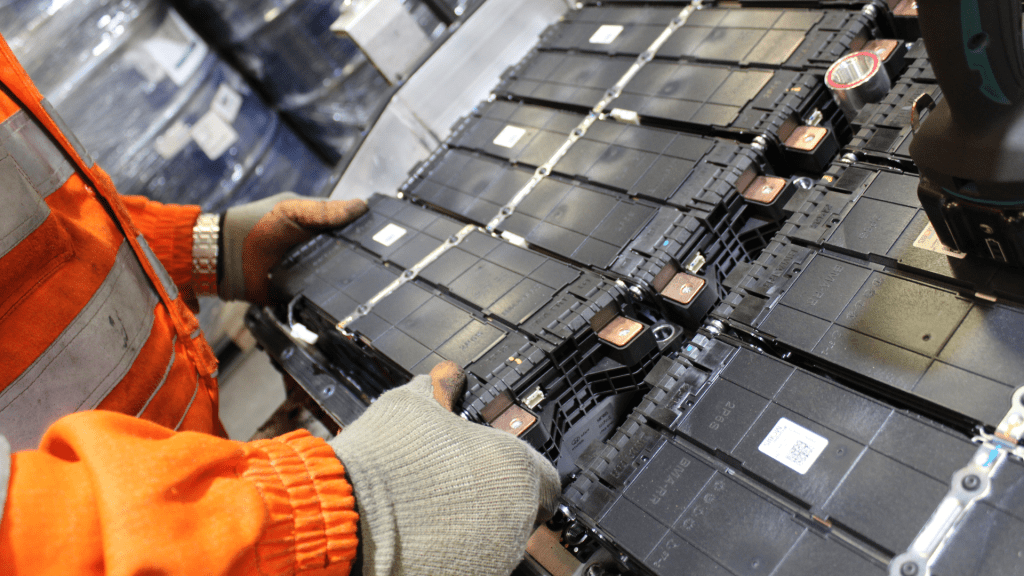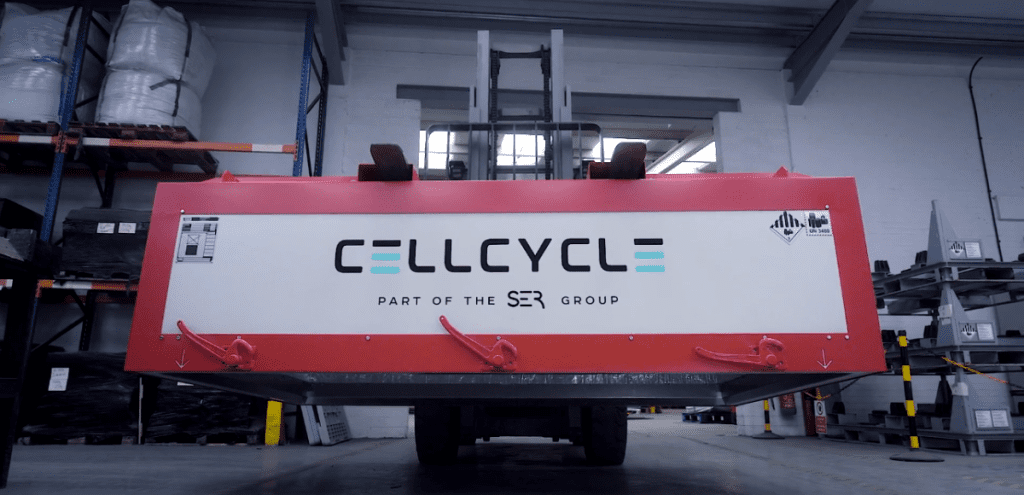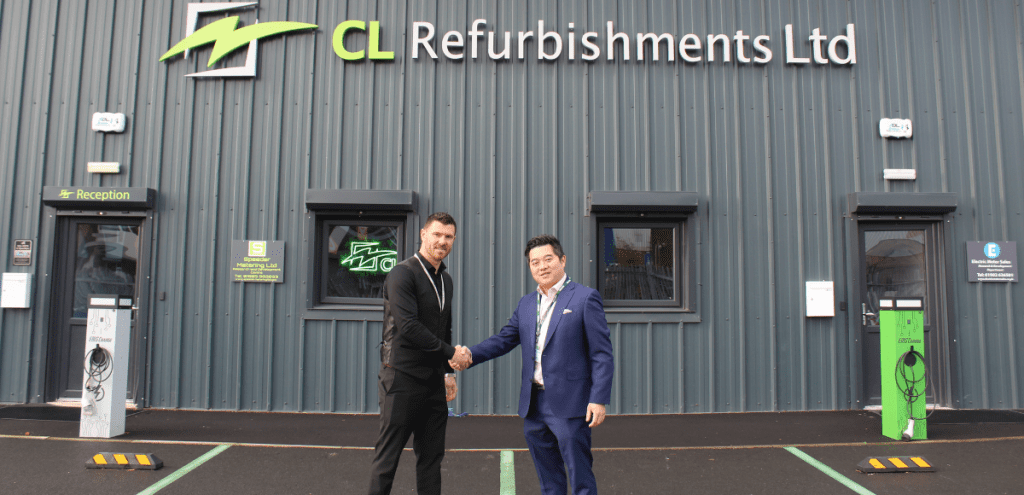1. The importance of having a transparent li-ion battery supply chain
Companies and consumers must have full visibility into the entire process, from the sourcing of raw materials to the manufacturing and distribution of the batteries. Here are some key reasons why transparency is essential:
1. Ethical Sourcing: A transparent supply chain ensures that the raw materials used in lithium-ion batteries are responsibly sourced. This includes ensuring that the mining and extraction processes meet ethical standards, such as fair labour practices and minimal environmental impact. Without transparency, it is difficult to verify if the materials used in the batteries have been sourced ethically.
2. Environmental Impact: Transparency allows for better monitoring and evaluation of the environmental impact of the battery supply chain. This includes tracking factors such as energy consumption, waste management, and emissions during the manufacturing and transportation processes. With full visibility, companies can identify areas of improvement and implement sustainable practices to minimise their carbon footprint.
3. Consumer Trust: Transparency builds trust between manufacturers and consumers. When companies are open and honest about their supply chain practices, consumers can make informed decisions and choose products that align with their values. By providing detailed information about the origin and production process of lithium-ion batteries, companies can demonstrate their commitment to sustainability and responsible sourcing.
4. Quality Assurance: Transparent supply chains enable better quality control measures. From the selection of raw materials to the manufacturing process, every step can be closely monitored and evaluated to ensure product integrity. By identifying potential issues early on, companies can take corrective actions and maintain high-quality standards.
5. Regulatory Compliance: Transparent supply chains are also important for regulatory compliance. Governments and regulatory bodies may require specific certifications or standards to be met in the production and distribution of lithium-ion batteries. With transparency, companies can demonstrate compliance and avoid any legal or reputational risks.
2. Assessing the current state of the lithium-ion battery supply chain
Assessing the current state of the lithium-ion battery supply chain is crucial in understanding the challenges and opportunities for achieving transparency. Here are some key factors to consider:
1. Lack of Visibility: One of the main challenges in the current state of the lithium-ion battery supply chain is the lack of visibility. Many companies rely on multiple suppliers and subcontractors, making it difficult to track the origin of raw materials and monitor the production process. This lack of visibility hinders efforts to ensure ethical sourcing and environmental sustainability.
2. Complex Global Supply Chain: The lithium-ion battery supply chain is complex, involving various stakeholders from different countries. From mining the raw materials to manufacturing and distribution, the supply chain spans across multiple countries with different regulations and standards. This complexity makes it challenging to establish a transparent and traceable supply chain.
3. Limited Traceability Systems: Traceability systems play a crucial role in achieving transparency in the supply chain. However, the current state of traceability systems for lithium-ion batteries is limited. There is a need for standardised systems that can track and trace raw materials, components, and finished products throughout the supply chain. Implementing such systems would enable companies to ensure ethical sourcing and monitor environmental impact.
4. Supply Chain Mapping: Mapping the lithium-ion battery supply chain is essential for understanding the different stages and stakeholders involved. By mapping the supply chain, companies can identify potential risks and opportunities for transparency. This includes identifying high-risk areas, such as regions with poor labour practices or environmental regulations and taking steps to address these issues.
5. Collaboration and Partnerships: Achieving transparency in the lithium-ion battery supply chain requires collaboration and partnerships between stakeholders. Governments, industry associations, and non-governmental organisations (NGOs) can work together to establish industry standards, certifications, and guidelines for responsible sourcing and sustainable manufacturing practices. Collaboration can also foster knowledge sharing and best practices, driving the industry towards greater transparency.
6. Technology Solutions: Technology can play a significant role in achieving transparency in the lithium-ion battery supply chain. Blockchain, for example, can provide a decentralised and transparent platform for recording and verifying transactions and data throughout the supply chain. This technology can enhance traceability, ensuring that information about raw materials, manufacturing processes, and distribution is securely recorded and easily accessible.
3. Implementing transparency measures
Implementing transparency measures is crucial for achieving a transparent li-ion battery supply chain. By implementing the following measures, companies can ensure ethical sourcing, environmental sustainability, and consumer trust:
1. Supplier Due Diligence: Conducting thorough due diligence on suppliers is essential for transparency. Companies should assess supplier practices, including labour conditions, environmental impact, and compliance with ethical standards. This includes conducting on-site audits and inspections to verify supplier claims and ensure compliance.
2. Certification and Standards: Implementing industry certifications and standards can help establish transparency in the supply chain. Certifications such as ISO 14001 for environmental management and ISO 26000 for social responsibility can assure that companies are following best practices. Adhering to these standards ensures that the supply chain is transparent and meets established sustainability and responsible sourcing criteria.
3. Supply Chain Visibility: Enhancing visibility throughout the supply chain is crucial for achieving transparency. This can be done by implementing digital technologies such as IoT (Internet of Things) devices and sensors to track and monitor the movement of raw materials and finished products. Blockchain technology can also enhance supply chain visibility by securely recording and verifying transactions and data.
4. Traceability Systems: Implementing robust traceability systems is vital for a transparent supply chain. Traceability systems should track the origin of raw materials, their processing and transformation, and the final product. This information should be easily accessible and verifiable, enabling companies to ensure responsible sourcing and monitor environmental impact throughout the supply chain.
5. Transparency Reporting: Regular reporting on transparency initiatives and progress is essential for maintaining accountability and credibility. Companies should disclose information about their supply chain practices, including suppliers’ names, locations, and audits. Transparency reporting should be comprehensive and accessible to all stakeholders, including consumers, investors, and regulators.
4. Strengthening supplier relationships through transparency
1. Clear Communication: Effective communication is essential for building strong supplier relationships. Companies should establish open lines of communication with their suppliers, sharing information about their sustainability goals and expectations. Regular meetings and updates can help ensure that both parties are aligned and working towards a common goal of transparency.
2. Supplier Assessment and Selection: When selecting suppliers, companies should prioritise those who align with their transparency and sustainability values. Conducting thorough due diligence on potential suppliers, such as assessing their social and environmental practices, can help ensure ethical sourcing and responsible supply chain management. Supplier assessments should be based on clear criteria and standards to verify that suppliers meet the company’s transparency requirements.
3. Collaboration and Partnerships: Collaboration between suppliers and companies is key to achieving transparency and sustainability goals. Companies can work with their suppliers to develop joint initiatives, share best practices, and drive continuous improvement. By fostering a collaborative environment, companies can leverage the expertise and capabilities of their suppliers to collectively address challenges and enhance supply chain transparency.
4. Performance Monitoring and Evaluation: Regularly monitoring and evaluating supplier performance is essential for maintaining transparency and accountability. Companies should establish clear performance metrics and key performance indicators (KPIs) to track supplier adherence to sustainability standards and transparency requirements. Supplier performance evaluations should be conducted on an ongoing basis to identify areas for improvement and address any non-compliance issues.
5. Supplier Training and Capacity Building: Providing training and capacity building opportunities to suppliers can help enhance their understanding of transparency requirements and best practices. Companies can organise workshops, webinars, or training sessions to educate suppliers on topics such as responsible sourcing, ethical labour practices, and environmental sustainability. By investing in supplier education, companies can empower their suppliers to meet transparency standards and drive positive change within the supply chain.
nnn
5. Monitoring and auditing the supply chain
1. Conducting Regular Inspections and Audits: Companies should conduct regular inspections and audits of their suppliers, manufacturing facilities, and distribution channels. This helps in verifying compliance with transparency standards, ethical sourcing of raw materials, and adherence to responsible manufacturing practices. Inspections and audits should cover all aspects of the supply chain, including material sourcing, production processes, worker safety, waste disposal, and transportation.
2. Implementing Supply Chain Traceability Systems: Companies should implement traceability systems that enable them to track the movement of li-ion batteries throughout the supply chain. These systems should provide detailed information on the origin of raw materials, manufacturing processes, quality control measures, transportation routes, and end-of-life management. By ensuring traceability, companies can identify any potential gaps in transparency and take necessary corrective actions.
3. Collaborating with Suppliers: Companies must establish strong relationships with their suppliers and foster a culture of transparency and accountability. By working closely with suppliers, companies can ensure that they understand and adhere to transparency requirements. Collaboration can include regular communication, sharing best practices, conducting joint audits, and providing training and support to suppliers to improve their transparency practices.
4. Utilising Technology for Real-time Monitoring: Technology can play a pivotal role in real-time monitoring of the supply chain. Sensors and IoT devices can be used to collect data on factors such as temperature, humidity, location, and handling conditions. This data can be transmitted and stored in a centralised system, allowing companies to monitor the supply chain in real-time and promptly address any deviations from transparency standards.
5. Implementing Third-party Certifications: Companies can seek third-party certifications to validate their transparency practices. Certifications such as ISO 14001 (Environmental Management System) and ISO 45001 (Occupational Health and Safety Management System) can demonstrate a company’s commitment to responsible and transparent supply chain practices. Third-party certifications provide independent verification and assurance to stakeholders, including consumers and regulatory bodies.
6. Promoting Transparency Reporting: Companies should develop transparent reporting mechanisms to communicate their supply chain practices to stakeholders. Transparency reports can include information on the company’s sustainability initiatives, ethical sourcing practices, worker welfare programs, and environmental impact. By making these reports publicly available, companies can build trust with consumers and demonstrate their commitment to transparency.
nnn
6. The benefits of a transparent lithium-ion battery supply chain
1. Consumer Trust and Confidence: Transparency in the supply chain builds trust and confidence among consumers. By providing visibility into the sourcing, manufacturing, and distribution processes, companies can reassure their customers that their products are produced ethically, responsibly, and with consideration for environmental impact. This, in turn, can enhance brand reputation and loyalty.
2. Ethical Sourcing and Responsible Manufacturing: A transparent supply chain enables companies to ensure ethical sourcing of raw materials and responsible manufacturing practices. By conducting regular inspections and audits, companies can verify that their suppliers adhere to transparency standards, follow sustainable material sourcing practices, and maintain high environmental and social responsibility standards. This promotes fair trade and ethical business practices throughout the supply chain.
3. Environmental Sustainability: Transparency in the supply chain allows companies to monitor and control the environmental impact of their operations. By tracking the movement of batteries and collecting data on factors such as transportation routes, energy consumption during manufacturing, and end-of-life management, companies can identify areas for improvement and implement sustainable practices. This includes minimising carbon emissions, reducing waste generation, and promoting recycling and proper disposal of batteries.
4. Risk Mitigation: With a transparent supply chain, companies can identify and mitigate potential risks and vulnerabilities. By conducting regular inspections and audits, companies can detect any non-compliance, unethical practices, or inefficiencies early on and take appropriate corrective actions. This minimises the risk of disruptions in the supply chain, prevents damage to reputation, and ensures business continuity.
5. Regulatory Compliance: Transparency in the supply chain helps companies comply with regulatory requirements and industry standards. By implementing traceability systems, collaborating with suppliers, and obtaining third-party certifications, companies can demonstrate their commitment to responsible and transparent practices. This not only helps them meet legal obligations but also enhances their credibility with regulatory bodies and stakeholders.
6. Innovation and Collaboration: A transparent supply chain fosters innovation and collaboration within the lithium-ion battery industry. By sharing best practices, conducting joint audits, and providing training and support to suppliers, companies can drive continuous improvement and promote responsible practices throughout the industry. This creates a culture of collaboration, encourages knowledge sharing, and accelerates technological advancements.
nnn
7. Conclusion: Commitment to transparency for a sustainable future
In conclusion, a commitment to transparency in the lithium-ion battery supply chain brings a myriad of benefits, including consumer trust, ethical sourcing, environmental sustainability, risk mitigation, regulatory compliance, and opportunities for innovation and collaboration. By embracing transparency, implementing robust monitoring, and auditing processes, companies can contribute to the development of a sustainable and responsible supply chain ecosystem. Together, we can strive for a future where transparency is the norm and sustainable practices are at the core of the lithium-ion battery industry.


